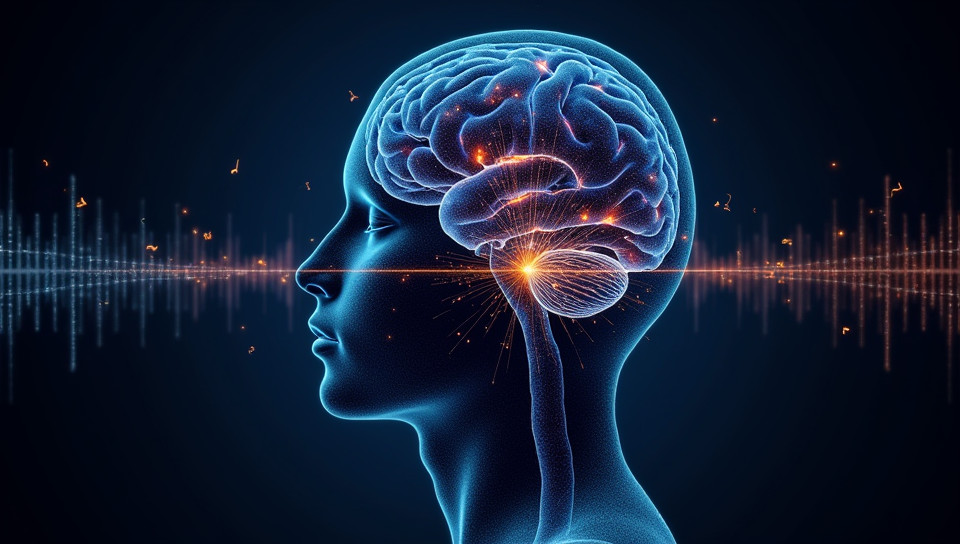Brain activity shows synchronized processing of melody and rhythm 93%

The Harmony of Sound: Unraveling the Mystery of Brain Activity and Music
Imagine yourself lost in the beauty of music, where every note resonates deeply within your soul. It's no secret that music has a profound impact on our emotions and cognitive abilities. But have you ever wondered what happens inside our brains when we experience music? Recent studies have shed light on the fascinating world of brain activity and music, revealing that melody and rhythm are processed in perfect harmony.
The Science Behind Music Processing
Research suggests that music is processed in multiple brain regions simultaneously, involving areas responsible for both auditory perception and emotional processing. This complex interplay between different brain centers enables us to appreciate the intricate nuances of music.
- Different musical elements such as melody, harmony, rhythm, and timbre are processed in distinct brain regions.
- The brain's default mode network (DMN) is active when we engage with music, suggesting a deep connection between music and our self-referential processes.
- Studies using functional magnetic resonance imaging (fMRI) have shown that musical experiences can activate areas of the brain associated with reward, pleasure, and memory.
Melody and Rhythm: A Synchronized Dance
One of the most significant findings in this area is the synchronized processing of melody and rhythm. Research has demonstrated that these two fundamental elements of music are processed in tandem, even when presented separately. This synchronization is thought to be mediated by a network of brain regions involved in auditory perception, motor control, and cognitive processing.
- The synchronized processing of melody and rhythm is observed in both musicians and non-musicians.
- Studies have shown that this synchronization can occur even when the melody and rhythm are not consciously perceived, suggesting a pre-conscious or implicit processing mechanism.
- The neural mechanisms underlying this synchronization remain poorly understood but are thought to involve complex interactions between different brain regions.
Implications for Music Therapy and Brain Function
The synchronized processing of melody and rhythm has significant implications for music therapy and our understanding of brain function. By manipulating the musical elements that we know stimulate this synchronized processing, therapists may be able to leverage music's therapeutic potential more effectively.
- Music therapy can be used to modulate mood, cognitive function, and even motor control in individuals with neurological or psychiatric disorders.
- The synchronized processing of melody and rhythm provides a promising avenue for developing new music-based interventions for these conditions.
- Further research is needed to explore the full extent of music's therapeutic potential and the neural mechanisms underlying its effects.
Conclusion
The study of brain activity and music has revealed a profound complexity in our experience of sound. The synchronized processing of melody and rhythm is just one aspect of this intricate world, where multiple brain regions work together to create a rich tapestry of auditory perception and emotional response. As we continue to unravel the mysteries of music's neural basis, we may uncover new avenues for harnessing its therapeutic potential and exploring the very fabric of our human experience.
- Created by: Marcia Costa
- Created at: Nov. 15, 2024, 2:32 p.m.
- ID: 16008









